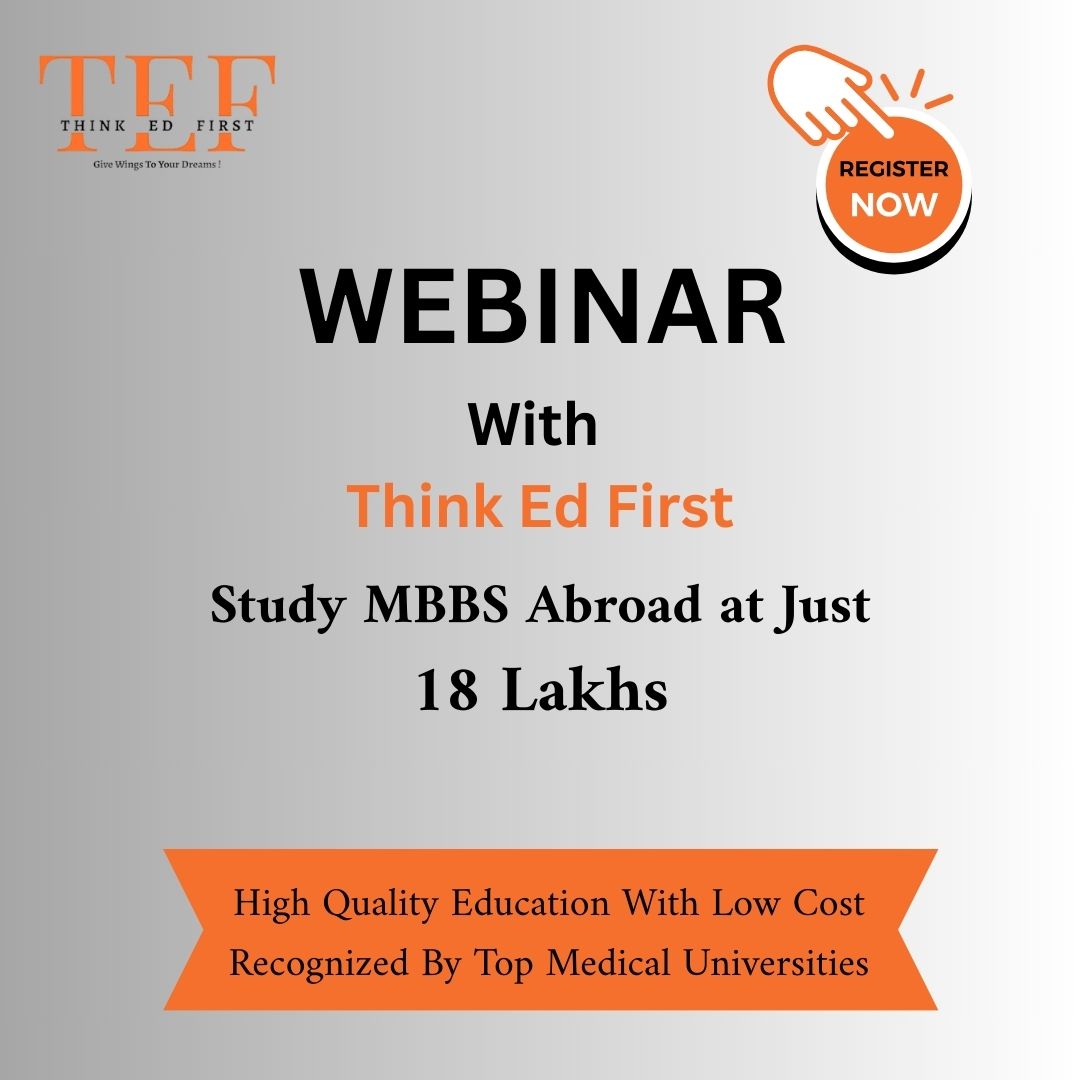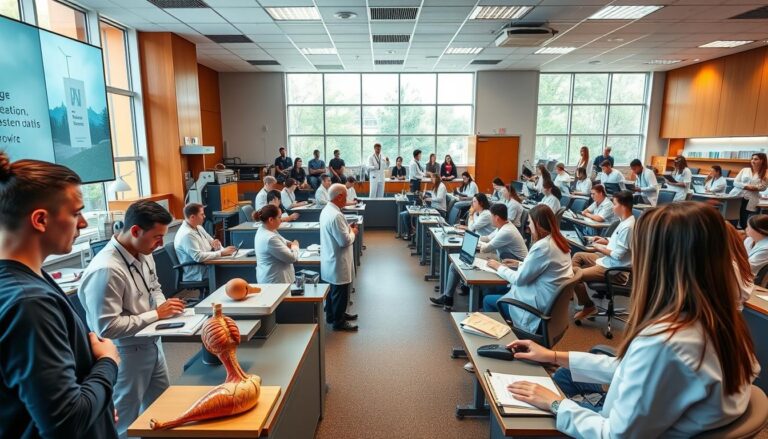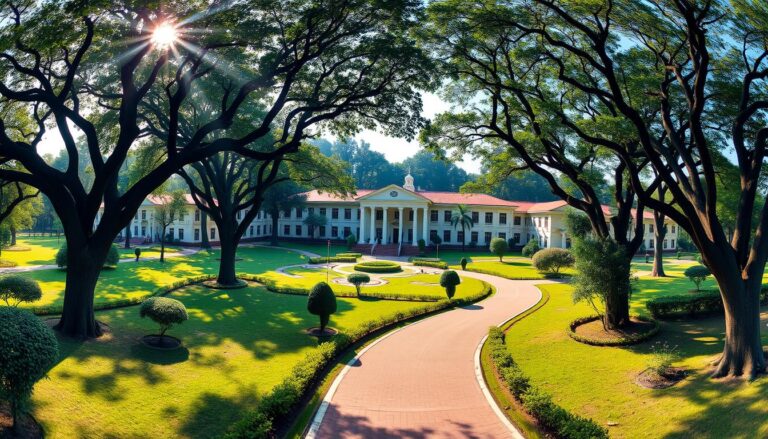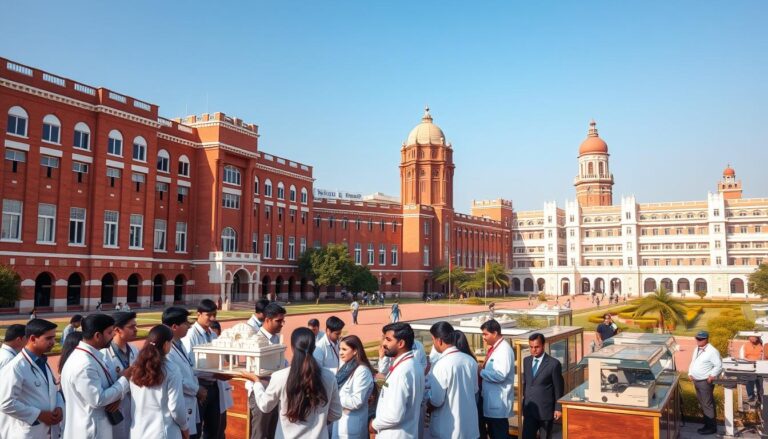Starting a career in medicine is a dream for many, but the journey begins with careful planning. The NEET-UG exam is the gateway to over 600 medical colleges across India. It’s not just about studying hard; it’s about understanding the process and staying ahead of deadlines.
From registration to counseling, every step matters. Knowing the exam dates and state-specific schedules can make a huge difference. With 72,098 seats available nationwide, strategic planning is key to securing your spot.
We’ll guide you through the critical milestones, helping you stay on track. Whether it’s the AIQ or state quota systems, understanding the process can boost your chances. Let’s make your dream a reality.
Introduction to MBBS Admission 2025 in India
Medical education in India is highly competitive, with millions of candidates vying for limited seats. The NEET-UG exam plays a pivotal role in unifying the admission process across the country. Over 2.3 million aspirants are expected to compete for approximately 72,000 seats in 2025.
Understanding the structure of India’s medical education system is crucial. Key stakeholders like the National Testing Agency (NTA), Medical Counseling Committee (MCC), and state counseling boards oversee the process. Early preparation and awareness of timelines can significantly improve a candidate’s chances.
Seat distribution varies across institutions. AIIMS and JIPMER, two of the most prestigious medical colleges, offer a combined total of 1,800 seats. Here’s a breakdown of their seat allocation:
| Institution | Total Seats |
|---|---|
| AIIMS | 1,650 |
| JIPMER | 150 |
Candidates can apply through two main pathways: the All India Quota and State Quotas. Each has its own set of rules and reservation policies. Financial considerations also play a role, with fees varying significantly between government and private institutions.
Digital portals have streamlined the application tracking process, making it easier for candidates to stay updated. With careful planning and a clear understanding of the process, aspiring doctors can navigate this competitive landscape successfully.
MBBS Admission Dates 2025: Key Deadlines
Planning your NEET 2025 journey requires knowing every critical date and deadline. Missing a single step can impact your chances of securing a seat in a top medical college. We’ve broken down the timeline to help you stay on track.
NEET 2025 Registration and Exam Timeline
The NEET 2025 process begins with registration, which opens on February 7 and closes on March 7. During this period, candidates must complete their application forms and pay the required fees. A correction window is available from March 9 to 11 for any updates or changes.
Admit cards will be released on May 1, and the exam is scheduled for May 4. Results will be declared on June 14, marking the start of the counseling phase. Here’s a quick overview of the key dates:
| Event | Date |
|---|---|
| Registration Start | February 7, 2025 |
| Registration End | March 7, 2025 |
| Correction Window | March 9-11, 2025 |
| Admit Card Release | May 1, 2025 |
| Exam Date | May 4, 2025 |
| Result Declaration | June 14, 2025 |
State Counseling Schedule Overview
Counseling for NEET 2025 will take place from July to November. Each state has its own schedule, so it’s essential to stay updated. For example, West Bengal’s counseling typically occurs in July and August. Missing document submission windows can lead to disqualification, so be prepared.
Here are some key points to remember:
- Seat matrices are published before counseling begins, helping you make informed choices.
- Special dates are reserved for NRI and management quota applicants.
- Tie-breaker protocols are in place for candidates with equal scores.
- Holidays may affect scheduling, so plan accordingly.
By staying organized and aware of these dates, you can navigate the NEET 2025 process with confidence.
NEET 2025: The Gateway to MBBS Admissions
The NEET exam is the cornerstone for aspiring medical students in India. It is the single most important test for securing a seat in a medical college. Understanding its structure and scoring system is crucial for success.
Exam Pattern and Marking Scheme
The NEET exam consists of 200 multiple-choice questions, out of which 180 must be attempted. The subjects are divided as follows:
- Physics: 45 questions
- Chemistry: 45 questions
- Biology: 90 questions
Each correct answer awards +4 marks, while an incorrect answer deducts -1 mark. Unattempted questions do not affect your score. The maximum marks you can achieve are 720.
Language options are another advantage. The test is available in 13 regional languages, making it accessible to students across India. This ensures that language barriers do not hinder performance.
NEET Cutoff Percentiles by Category
Cutoff percentiles vary by category. For the general category, the cutoff is the 50th percentile, which translates to approximately 162 marks. Reserved categories (OBC/SC/ST) have a cutoff at the 40th percentile, around 127 marks.
Here’s a quick overview of historical cutoff trends:
- General category: Marks have increased slightly each year.
- Reserved categories: Cutoffs remain stable but competitive.
- PwD candidates: Specific provisions ensure fair evaluation.
Special provisions are in place for PwD candidates, including scribe permits and compensatory time. These measures ensure equal opportunities for all aspirants.
For more details on the NEET 2025 registration process, visit our comprehensive guide.
Eligibility Criteria for MBBS Admission 2025
Understanding the eligibility criteria is the first step toward securing a seat in medical colleges. These standards ensure that only qualified candidates enter the medical field. Let’s break down the key requirements for 2025.
Academic and Age Requirements
Candidates must meet specific academic and age criteria to qualify. The minimum age is 17 years by December 31, 2025. There is no upper age limit, making it accessible for all aspiring students.
Academically, candidates must have passed class 12 with Physics, Chemistry, Biology/Biotechnology, and English as core subjects. For the general category, a minimum of 50% in these subjects is required. Reserved categories (SC/ST/OBC) need 40%, while PwD candidates require 45%.
Domicile Rules for State Quotas
State quotas have specific domicile requirements. Candidates must provide proof of residency for at least 10 years in the state they are applying to. This ensures that local students have priority in securing seats.
Some states, like Jammu and Kashmir, have exceptions to these rules. It’s essential to check state-specific guidelines to avoid disqualification.
Additional considerations include NRI admission protocols, multiple attempts policy, and gap year eligibility. Candidates must also verify their reserved category status by submitting relevant documents during the application process.
Step-by-Step MBBS Admission Process
Navigating the medical college admission process can seem overwhelming, but breaking it down into clear steps makes it manageable. Here’s a detailed guide to help you understand each stage, from eligibility to securing your seat.
The first step is ensuring you meet the eligibility criteria. This includes age, academic qualifications, and category-specific requirements. Once confirmed, you can proceed to register for the NEET exam. The registration portal is user-friendly, guiding you through filling in personal and academic details.
After the exam, results are declared, and your scorecard will display your All India Rank (AIR) and category rank. These ranks are crucial for the counseling process. Counseling registration is handled by the Medical Counseling Committee (MCC), and it’s essential to understand the nuances of choice filling.
During counseling, you’ll have the opportunity to select your preferred colleges and courses. Mock allotments help you analyze your chances before finalizing your choices. Once seats are allocated, you’ll need to complete the fee payment process, which includes both non-refundable and refundable components.
Document verification is a critical step. Ensure you have all required documents, such as your NEET scorecard, mark sheets, and category certificates. Reporting to the allotted college with original documents completes the process. Deferment policies and waitlist management are also available for those who need flexibility.
By following this step-by-step process, you can confidently navigate the journey to securing a seat in a medical college. Stay organized, keep track of deadlines, and prepare your documents in advance to avoid last-minute hurdles.
Top Government Medical Colleges for MBBS 2025
Government medical colleges in India are renowned for their excellence and affordability. These institutions provide top-notch education, state-of-the-art facilities, and a strong foundation for a medical career. Let’s explore the best options available.
AIIMS Institutions: Fees and Rankings
The All India Institute of Medical Sciences (AIIMS) network is a top choice for students. AIIMS Delhi, ranked #1 by NIRF, offers an annual fee of just ₹6,075. With over 2,000 seats across its institutions, AIIMS ensures quality education and robust research opportunities.
Other AIIMS colleges, like AIIMS Bhopal and AIIMS Jodhpur, are also highly ranked. These institutions are known for their rigorous academic programs and excellent placement records.
Other Premier Government Colleges
Beyond AIIMS, India boasts several other prestigious government medical colleges. JIPMER Puducherry, with an annual fee of ₹30,460, is a favorite for its advanced infrastructure and low costs. King George’s Medical University (KGMU) in Lucknow charges ₹2.14 lakh per year and is known for its strong alumni network.
State gems like Madras Medical College and Grant Medical College also stand out. These colleges offer affordable education and are highly respected in the medical community.
- Seat Matrix: AIIMS institutions alone offer over 2,000 seats annually.
- Hostel Fees: Affordable accommodation options are available at most government colleges.
- Research Infrastructure: Significant investments ensure cutting-edge facilities.
- PG Placements: High placement rates for postgraduate programs.
Choosing the right government medical college can shape your future. With affordable fees, excellent rankings, and strong alumni networks, these institutions are a gateway to a successful medical career.
Leading Private Medical Colleges and Their Fees
Private medical colleges in India offer diverse opportunities for aspiring doctors. These institutions are known for their advanced facilities, global collaborations, and flexible payment options. Let’s explore some of the top private colleges and what they offer.

Christian Medical College (CMC) and Kasturba Medical College
Christian Medical College (CMC) Vellore is one of the most prestigious private institutions in India. With an annual fee of ₹13,500, it provides affordable education without compromising on quality. CMC is renowned for its research programs and international collaborations.
Kasturba Medical College (KMC) in Manipal, on the other hand, charges ₹43.95 lakh per year. Despite the higher fees, KMC offers state-of-the-art infrastructure and extensive clinical exposure. Both colleges are accredited by NAAC and ranked highly by NIRF.
High-Cost Institutions: What to Expect
Some private colleges, like SRM Medical College in Chennai, have significantly higher fees. At ₹1.35 crore per year, SRM attracts students with its modern facilities and global partnerships. However, such institutions often provide installment payment options and scholarships to ease financial burdens.
Here are some key features of private medical colleges:
- Management quota admissions are available, though they come with higher fees.
- Many colleges offer Merit-cum-Means scholarships for deserving students.
- International collaborations provide opportunities for global exposure.
- High bed strength ratios ensure comprehensive clinical training.
- Loan facilitation services are often available to support students financially.
Choosing the right private college involves weighing costs against benefits. With careful planning, you can find an institution that aligns with your career goals and financial situation.
MBBS Admission 2025: Seat Allocation and Quotas
Securing a seat in a medical college involves understanding the complex system of seat allocation and quotas. The process is divided into various categories, each with its own rules and percentages. Knowing how these quotas work can help you strategize better and improve your chances of success.
All India vs. State Quota Seats
Seats in medical colleges are primarily divided into two categories: All India Quota (AIQ) and State Quota. The AIQ accounts for 15% of the total seats, while the remaining 85% are reserved for State Quota candidates. This ensures that local students have priority in their respective states.
Constitutional reservations further divide these seats. Scheduled Castes (SC) get 15%, Scheduled Tribes (ST) receive 7.5%, and Other Backward Classes (OBC) are allocated 27%. Economically Weaker Sections (EWS) and Persons with Disabilities (PwD) also have reserved percentages.
NRI and Management Quota Details
Private colleges often reserve 5-15% of their seats for NRI candidates. These seats require specific documentation, including proof of sponsorship. Management quota seats are another option, though they come with higher fees and separate admission processes.
Here are some key points to remember:
- Domicile certificates are mandatory for State Quota applicants.
- NRI seats require sponsorship documents and higher fees.
- Management quota admissions follow a legal framework.
- Special category seats are available for Armed Forces and PwD candidates.
- Minority institutions have their own quota systems.
Understanding these quotas and their requirements can help you navigate the admission process more effectively. Stay informed and prepare your documents in advance to avoid last-minute hurdles.
Essential Documents for MBBS Admission
Preparing the right documents is a critical step in the journey to becoming a doctor. Ensuring all required certificates are in order can save time and avoid last-minute stress. We’ll guide you through the key paperwork needed for a smooth application process.
Your NEET scorecard and 10+2 marksheet are the most important documents. These prove your eligibility and academic qualifications. Domicile proof and caste certificates are also required for state quota and reserved category applicants.
Digital submission protocols have simplified the process. Scanned copies of your photo, signature, and thumb impressions must meet specific size and format requirements. Notarized affidavits for gap years or anti-ragging declarations are also mandatory.
Here’s a detailed list of essential documents and their specifications:
| Document | Requirements |
|---|---|
| NEET Scorecard | Original and scanned copy |
| 10+2 Marksheet | Scanned copy with clear details |
| Domicile Proof | Notarized certificate |
| Caste Certificate | Issued by competent authority |
| Passport-Size Photo | Recent, white background, no glasses |
| Signature | Scanned in JPG format |
Validity periods for medical certificates and PAN-linked fee payments are other crucial details. Migration certificates and anti-ragging declarations must also be prepared in advance. By organizing these documents early, you can ensure a hassle-free admission process.
NEET 2025 Syllabus and Preparation Tips
Mastering the NEET syllabus is the foundation for achieving a top rank. The syllabus covers Physics, Chemistry, and Biology, with questions from both Class 11 and 12. Understanding the weightage and structure of each subject can help you plan your preparation effectively.
Subject-Wise Breakdown
The NEET syllabus is divided into three main subjects: Physics, Chemistry, and Biology. Each subject has its own set of chapters and topics that are crucial for the exam. Here’s a quick overview:
- Physics: Focus on mechanics, thermodynamics, and electromagnetism. These topics carry significant weightage.
- Chemistry: Organic and inorganic chemistry are equally important. Practice numericals for physical chemistry.
- Biology: Zoology and botany are both essential. Pay attention to genetics, ecology, and human physiology.
Recommended Study Materials
Choosing the right study materials is critical for success. NCERT books are the core foundation for NEET preparation. Here are some additional resources:
- Physics: HC Verma and DC Pandey for advanced concepts.
- Chemistry: OP Tandon and Morrison & Boyd for in-depth understanding.
- Biology: Trueman’s Biology and SC Verma for detailed explanations.
Digital resources like NTA Abhyas can also help you practice effectively. Time management is key, so create a study schedule that balances all subjects. Mnemonic techniques can make memorizing complex biological terms easier.
Error analysis is another important strategy. Review your mistakes in mock tests to improve accuracy. Stress management techniques like yoga and meditation can keep you focused and calm during preparation. Peer study groups can also enhance understanding and retention.
By following these tips and understanding the syllabus, you can approach the NEET exam with confidence and clarity.
West Bengal MBBS Admission 2025: Special Focus
West Bengal offers a unique pathway for aspiring medical students, with specific rules and opportunities. The state has a well-structured system for seat allocation and counseling, ensuring fair chances for local candidates. Understanding these guidelines can make a significant difference in your journey.
Seat Distribution and Domicile Rules
West Bengal has a total of 5,650 seats for medical aspirants, with 3,850 reserved for government colleges. The state follows a strict domicile rule, requiring candidates to have a 10-year residency proof. This ensures priority for local students.
Top institutions like Nil Ratan Sircar Medical College and Medical College Kolkata are highly sought after. District quota sub-categories further divide seats, providing opportunities for candidates from specific regions. Special provisions are also in place for hill area candidates.
Key Dates for West Bengal Counseling
The counseling process in West Bengal involves several critical steps. Choice locking protocols allow candidates to prioritize their preferred colleges. Migration certificates are mandatory for students applying from other states.
Security fee payment thresholds and spot round admission chances add flexibility to the process. Here’s a quick overview of what to expect:
- District quotas ensure fair representation for local candidates.
- Choice locking helps in prioritizing preferred institutions.
- Special provisions support hill area aspirants.
- Migration certificates are required for non-local students.
- Spot rounds offer additional opportunities for seat allocation.
By staying informed and prepared, you can navigate the West Bengal medical admission process with confidence.
MBBS Course Fees: Government vs. Private Colleges
The cost of pursuing a medical degree varies significantly between government and private institutions. Understanding these differences is essential for making an informed decision about your education. Government colleges are known for their affordability, while private colleges often come with higher fees but offer advanced facilities.
In government institutions, annual fees range from ₹6,000 to ₹50,000. Hostel fees are also minimal, with examples like Maulana Azad Medical College charging ₹500 per year. Private colleges, on the other hand, can cost anywhere from ₹3 lakh to ₹1.35 crore annually. These institutions often provide modern infrastructure and global exposure, but the financial commitment is substantial.
Hidden costs like transportation and hostel expenses should also be considered. Government colleges typically have lower additional costs, while private institutions may charge higher fees for these services. EMI options are available at many private colleges, making it easier to manage payments over time.
Fee regulation committees like the MCI and NMC ensure transparency in fee structures. Scholarships are another way to reduce financial burden. The National Scholarship Portal offers various schemes for eligible students. Loan interest rates and reimbursement policies are also worth exploring, especially for those planning to study abroad.
Here’s a quick comparison of key financial aspects:
- Government colleges: ₹6,000 – ₹50,000/year, low hostel fees.
- Private colleges: ₹3 lakh – ₹1.35 crore/year, higher additional costs.
- EMI options: Available at private institutions for flexible payments.
- Scholarships: National Scholarship Portal offers financial aid.
- Loan trends: Competitive interest rates for education loans.
By understanding these financial details, you can plan your medical education more effectively. Whether you choose a government or private college, being aware of the costs will help you make the best decision for your future.
Placement Prospects After MBBS in India
Completing your medical degree opens doors to diverse career opportunities across India. From government jobs to private hospital placements, the options are vast and rewarding. Understanding the placement landscape can help you make informed decisions about your future.
Top Institutions with High Salary Packages
Certain colleges stand out for their impressive placement records and salary packages. For instance, IMS BHU offers an average salary of ₹17 LPA, while AFMC provides ₹14.2 LPA. These institutions are known for their strong alumni networks and industry connections.
Here are some key factors that contribute to successful placements:
- PG entrance success rates: Many graduates pursue postgraduate studies to enhance their career prospects.
- Overseas residency partnerships: Collaborations with international hospitals open global opportunities.
- Hospital empanelment lists: Graduates often secure positions in top hospitals like Apollo and Fortis.
- Startup incubation support: Some colleges encourage entrepreneurship in healthcare.
- Rural service bond implications: Fulfilling service bonds can lead to permanent government roles.
- Fellowship opportunities: Specialized training programs boost employability.
- Alumni mentorship programs: Guidance from experienced professionals helps in career planning.
Top recruiters for medical graduates include WHO, PGI Hospital, and GE Healthcare. Placement assistance programs, though limited, are available in some private colleges. However, most students prefer pursuing MD or MS after MBBS for better career growth.
By choosing the right institution and leveraging available resources, you can secure a promising career in the medical field. Stay informed and proactive to make the most of your opportunities.
Common Challenges and How to Overcome Them
The path to becoming a doctor is filled with challenges that require careful planning and resilience. From intense competition to managing stress, aspiring medical students must navigate a complex process. Here, we break down common hurdles and provide practical solutions to help you succeed.
One of the biggest challenges is handling the overwhelming amount of information. With so many resources available, it’s easy to feel lost. Create a structured study plan and focus on reliable materials like NCERT books. This will help you stay organized and avoid information overload.
Counseling can also be a source of stress, especially when choosing between multiple colleges. To avoid choice paralysis, research your options thoroughly and prioritize your preferences. Mock allotments during counseling can give you a clearer idea of your chances.
Technical glitches during the application process can be frustrating. Always have a backup plan, such as using a different device or browser. Keep all necessary documents ready in digital format to avoid last-minute issues.
Travel logistics for multi-center counseling can add to the stress. Plan your travel in advance and keep all important documents handy. If language barriers are a concern, practice communicating in the required language or seek help from a translator.
Financial constraints are another common challenge. Explore scholarships, education loans, and part-payment options to ease the burden. Many institutions offer financial aid programs for deserving students.
Mental health is crucial during this demanding journey. Seek support from family, friends, or professional counselors. Regular breaks, meditation, and physical activity can help manage stress effectively.
| Challenge | Solution |
|---|---|
| Information Overload | Create a structured study plan and use reliable resources. |
| Counseling Choice Paralysis | Research thoroughly and prioritize preferences. |
| Technical Glitches | Have a backup plan and keep documents ready. |
| Travel Logistics | Plan travel in advance and keep documents handy. |
| Language Barriers | Practice communication or seek translation help. |
| Financial Constraints | Explore scholarships, loans, and part-payment options. |
| Mental Health | Seek support and practice stress management techniques. |
By addressing these challenges proactively, you can navigate the medical education process with confidence. Stay focused, seek help when needed, and remember that every hurdle is a step closer to your dream.
Conclusion: Navigating Your MBBS Admission Journey
Successfully navigating the medical education journey requires strategic planning and adaptability. We’ve outlined a 12-month timeline to help you stay on track, ensuring you meet every critical deadline. Utilizing digital tools like college predictors can simplify decision-making and improve your chances of securing a seat.
Contingency planning is essential for unexpected delays, such as technical glitches or travel disruptions. Always monitor NTA updates to stay informed about any changes in the process. Building a peer network can provide valuable support and insights throughout this journey.
Ethical considerations are equally important. Verify college accreditations and avoid relying on third-party sources. Post-admission, prepare for orientation by organizing your documents and understanding institutional requirements. With careful planning and continuous effort, you can confidently navigate this process and achieve your goals.





